The Day My Mother Became a Stranger
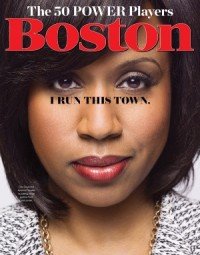

In the May issue of Boston Magazine, I write about my mother Sara Gilsdorf. After her sudden aneurysm, she was transformed. Almost 37 years later, I search for answers. Read the story here.
Memoir Recounts Youthful Quest for Meaning in D&D, Comics, Zeppelin
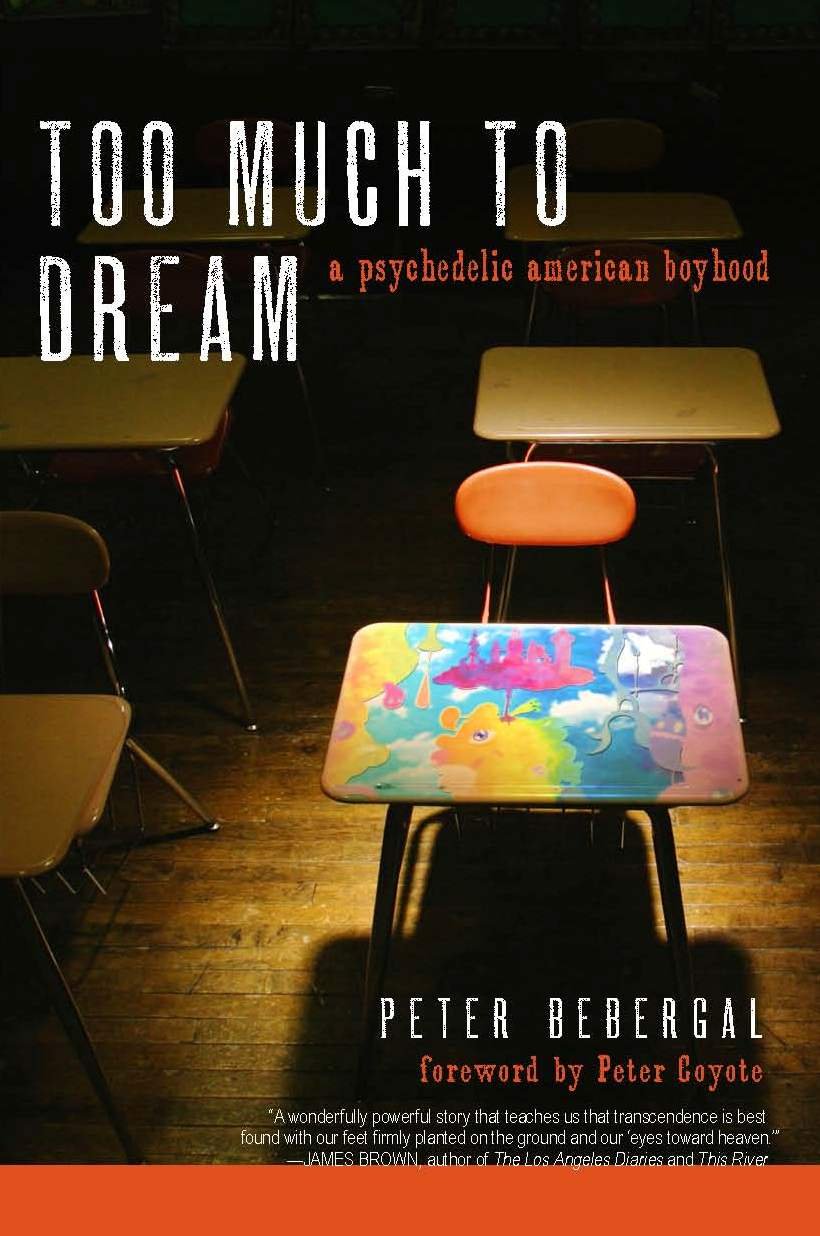 Growing up in the suburbs of Boston, and raised on secular Judaism, Cocoa Puffs and Gilligan’s Island, Peter Bebergal found himself on a quest. A spiritual quest that, as a teen, led him through comic books, Dungeons & Dragons and Carlos Castaneda, with stops in the world of hallucinogens, rock ‘n’ roll, and occultism. All were attempts to find a deeper, more meaningful path to personal illumination.
Growing up in the suburbs of Boston, and raised on secular Judaism, Cocoa Puffs and Gilligan’s Island, Peter Bebergal found himself on a quest. A spiritual quest that, as a teen, led him through comic books, Dungeons & Dragons and Carlos Castaneda, with stops in the world of hallucinogens, rock ‘n’ roll, and occultism. All were attempts to find a deeper, more meaningful path to personal illumination.
Bebergal’s new coming of age memoir, Too Much to Dream: A Psychedelic American Boyhood (Soft Skull Press) recounts that journey, using his own story and extensive research to explore the connections among popular culture, drugs, religion, and the craving for spirituality that America’s youth seeks, but rarely finds.
Bebergal is the also co-author of The Faith Between Us. He studied religion at Brandeis and Harvard Divinity School and writes frequently on the intersection of popular culture, religion, and science as well as reviews on science fiction and fantasy. Some of his essays and stories have appeared or are forthcoming in Tin House, Times Literary Supplement, Tablet Magazine, The Revealer, and The Believer. He lives in Cambridge, Mass., with his wife and son.
I had a chance to ask Peter Bebergal some questions — as well as happily geek-out on ’70s pop culture, D&D, Led Zeppelin and … wait for it … Freakies cereal.
Ethan Gilsdorf: Peter, why did you decide to write the book?
Peter Bebergal: At the age of 40, sober for many years, I found myself collecting psychedelic music again and reading counterculture/fringe spiritual texts, digging through the bins of underground comics at Million Year Picnic in Harvard Square. I realized that all these years later I was still drawn to this world. At the same time I started investigating and writing on the recent upsurge of psychedelic drug research and the burgeoning psychedelic subculture. I started to ask myself why my experiences led to where they had and despite them, why I still loved these ideas, this music, and these stories. I decided to investigate my own life and try to get beyond the traditional memoir by looking at myself as part of a particular cultural moment, the post ’60s generation who grew up in the shadow of that time.
Gilsdorf: What was so unique about the era of your coming-of-age?
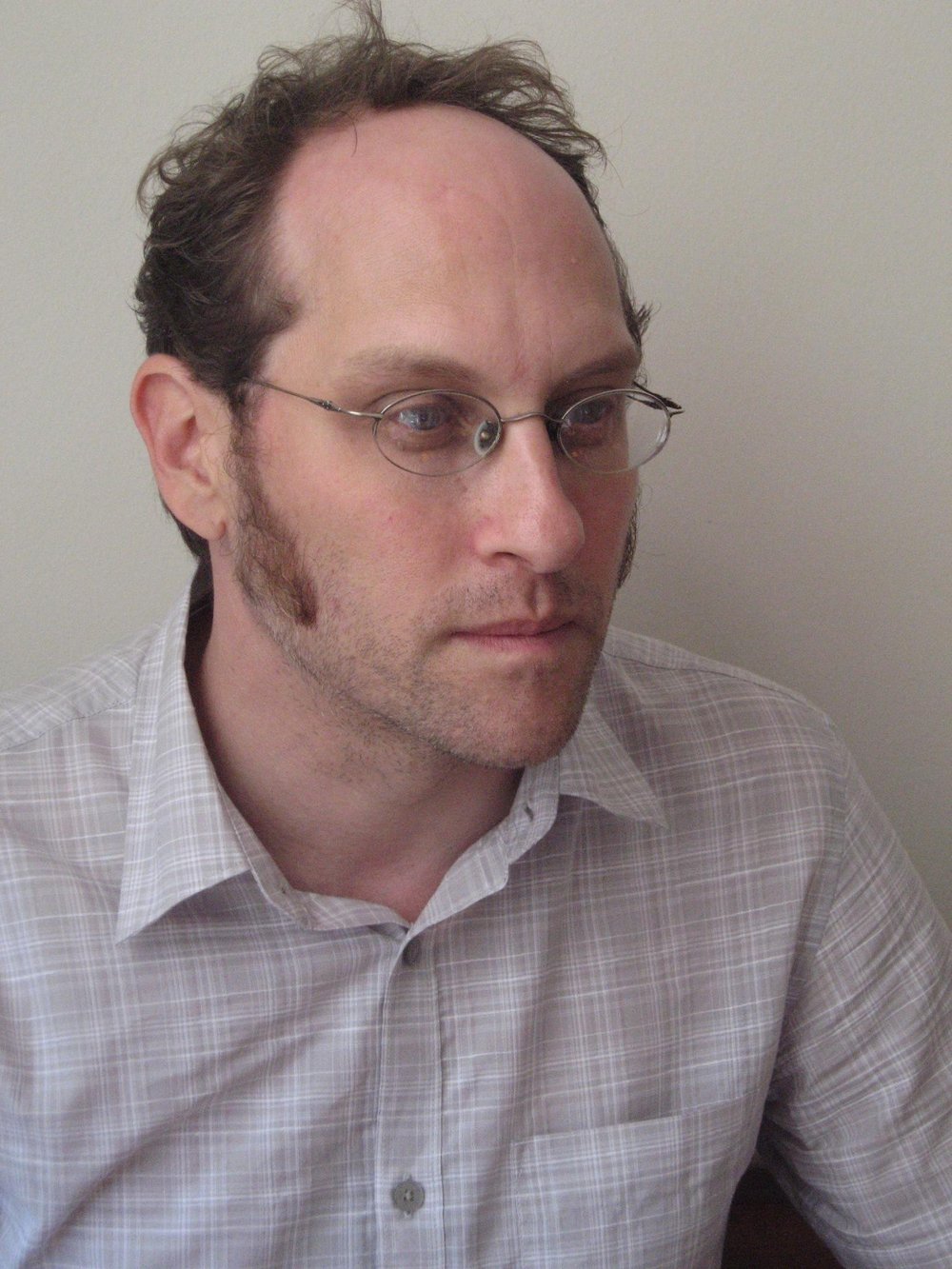 Bebergal: The mid to late ’70s was a time of incredibly weird and wonderful fringe pop culture. You could buy ESP cards at any bookstore, Creepy and Eerie Magazine were part of a revival of horror and supernatural comics, In Search Of and books on UFOs were commonplace, but the undercurrent was a kind of spiritual dissociation. The Aquarian age never happened, but the doors of altered consciousness had been opened. There was no looking back. I began to understand how my own story was part of a much larger cultural moment. I was symptomatic of a kind of Phillip-K-Dickian-post ’60s spiritual schizophrenia.
Bebergal: The mid to late ’70s was a time of incredibly weird and wonderful fringe pop culture. You could buy ESP cards at any bookstore, Creepy and Eerie Magazine were part of a revival of horror and supernatural comics, In Search Of and books on UFOs were commonplace, but the undercurrent was a kind of spiritual dissociation. The Aquarian age never happened, but the doors of altered consciousness had been opened. There was no looking back. I began to understand how my own story was part of a much larger cultural moment. I was symptomatic of a kind of Phillip-K-Dickian-post ’60s spiritual schizophrenia.
Gilsdorf: As a kid also growing up in the same era, I remember being haunted by Leonard Nimoy’s In Search Of TV series, as well as devouring books about the Loch Ness monster and Bigfoot. There are tons of examples of the weird and occult breaking through in the ’70s to the mainstream, aren’t there? Think of the X-Ray Vision glasses you could order from the back of a comic book, or plans to build your own hovercraft, or spy cameras, ventriloquist dummies, all kinds of tricks and magic. Remember Freakies breakfast cereal? All about a post-hippie commune of misfit toys who lived in a tree. What was that about?
Bebergal: Freakies cereal is an amazing example of the fringe making it into the mainstream. But it was so giddily counterculture, almost like a hippie practical joke, and yet it seemed to have this deep mythology, replete with individual characters with their own personalities, and even the great mythic trope, a world tree where all the Freakies gathered. I had to have it! I recall it was hard to find though, and that it actually tasted kind of horrible, but they came with a terrific prize, a magnet in the likeness of one of the characters.
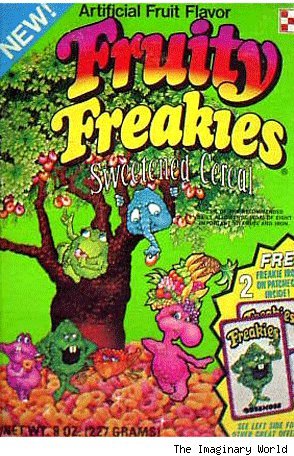 Gilsdorf: Yes, even to be a “freak” was celebrated, and money was to be made from that. I saved up whatever it was, 17 proofs of purchase from Freakies cereal boxes, to get my own “Snorkeldorf” T-shirt. There was a kind of vast commercialization of the unknown, of the weird and the unexplained. Big change from the 1960s, huh?
Gilsdorf: Yes, even to be a “freak” was celebrated, and money was to be made from that. I saved up whatever it was, 17 proofs of purchase from Freakies cereal boxes, to get my own “Snorkeldorf” T-shirt. There was a kind of vast commercialization of the unknown, of the weird and the unexplained. Big change from the 1960s, huh?
Bebergal: The end of the 1960s was the end of a grand narrative, one that was both political and spiritual, and that spoke to a young person’s rebellious instincts. By the 1970s all the ideas of the ’60s were now part of the popular imagination, and lost their edge, could no longer inspire the next generation in the same way, and church/temple hadn’t changed since the hippies showed the emperor had no clothes.
Gilsdorf: So where did one go from there, in the wake of this disillusionment?
Begergal: Many like myself turned to more fantastical narratives to fill the void. Marvel Comics, for example, contained an entire fully imagined universe. Characters from one comic appeared as guest stars in others, and their lives were linked by not only common cause, but by familial relationships, and strange genetic connections and mystical connections. The complex and cosmic Marvel Universe was all about the connections between one hero and another. I was obsessed with the Magneto/Wanda/Quicksilver family tree that also, inexplicably, involved the High Evolutionary [Editor's note: I didn't know who High Evolutionary was; turns out he's a superhero with extrasensory powers of clairvoyance, cosmic awareness and astral projection, among others. -- E.G.]
Gilsdorf: Somehow I missed drinking the superhero comic Kool-Aid. But I discovered D&D big-time. In Too Much to Dream, you talk about the connection between D&D and fantasy fiction and then the occult and psychedelics in your life. Can you explain it here?
 Bebergal: I think D&D was the perfect early antidote to what had been an entire childhood filled with magical thinking and a kind of spiritual unease. D&D gave me a healthy channel to express these abstract feelings. It was a concrete manifestation of the imagination, but it had rules and structure. When I started reading the books about psychedelic experiences written in the ’60s, they were as wondrous and exciting as any D&D game or Silver Surfer comic, but they spoke to that deeper existential need. I put down my maps and rule books and picked up sex, drugs, and rock ‘n’ roll.
Bebergal: I think D&D was the perfect early antidote to what had been an entire childhood filled with magical thinking and a kind of spiritual unease. D&D gave me a healthy channel to express these abstract feelings. It was a concrete manifestation of the imagination, but it had rules and structure. When I started reading the books about psychedelic experiences written in the ’60s, they were as wondrous and exciting as any D&D game or Silver Surfer comic, but they spoke to that deeper existential need. I put down my maps and rule books and picked up sex, drugs, and rock ‘n’ roll.
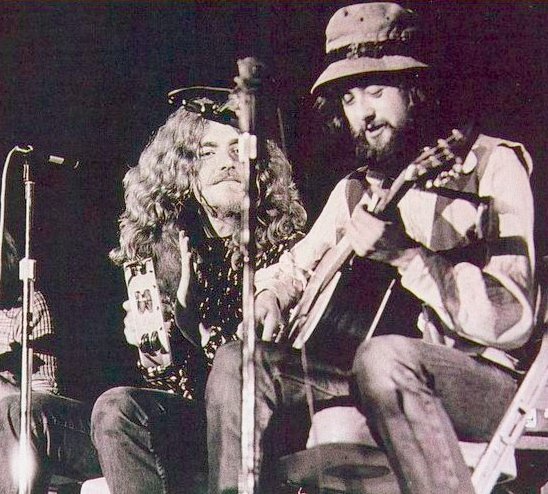 Gilsdorf: Being a huge Led Zeppelin fan, I have to ask: Where does Tolkien and Zeppelin fit into all this?
Gilsdorf: Being a huge Led Zeppelin fan, I have to ask: Where does Tolkien and Zeppelin fit into all this?
Bebergal: In the ’60s and ’70s there was a resurgent interest in Tolkien. Publishers put out encyclopedias of his world, linking the books to this vast mythology that by the sheer immensity of detail felt somehow real and maybe even a little “true.” This is what happens to the richest kinds myths, how they take on a quality of truth. Even Led Zeppelin sang about Mordor as if it was place they had visited and returned from. And for all of this, the new phenomena of role-playing gave you the tools to act out these stories, to create new worlds drawing from Tolkien, comics, even rock ‘n’ roll music.
Gilsdorf: I love that idea that, in their music, Robert Plant and Jimmy Page were essentially role-playing characters who had gone on an adventure in Middle-earth, interacting with Black Riders and Gollum. Great concept. Any other musicians that did this? Styx? Kansas? Blue Oyster Cult?
Bebergal: That era was a wonderland of rock as hero quest. Styx sang about a great voyage by sea that turns into a journey into space, Kansas wrote about sky gods, prophecy and mystical insight, and my personal favorite Rush’s Farewell to Kings was an entire fantasy epic that ends with a journey into a black hole. And then of course there is the great 1970s science fiction band Hawkwind, who collaborated with and were inspired by Michael Moorcock.
Gilsdorf: What do you think makes some people look for meaning so desperately they are driven to the point of madness?
Bebergal: It starts with what is a fundamental part of the human experience. Religion and myth are attempts to contain this pursuit, to give it some symbols and ritual, to give it language. But for some people, the more structure you try to impose, the more they see it as an empty gesture, that God or whatever you want to call it cannot be contained by any hierarchy or imposed regulations. Occult or esoteric traditions are attempts to get beyond conventional wisdom to something more experiential, but in the modern world, they have become bound up with every kind of paranormal and fringe idea. Go into any New Age bookstore and conspiracy theories about Freemasons are on the shelf below Aleister Crowley, right next to the books on UFOs. Of course it can weigh you down. I have come to love this stuff with a bit more critical distance these days.
Gilsdorf: Have you ever thought, OK, all this spiritual stuff makes some sense, but maybe I just liked getting high?
Bebergal: This is, in many ways, the central question. There is no doubt that at the bottom of all this is my drug addiction. It ruled me for sure. But like all things, it too did not exist in a vacuum. All the expectations I had for what these substances would do for me were intimately tied into all things that drove my psychology; Fantastic Four comic books, the writings of Timothy Leary, the music of Pink Floyd. My expectations could never be met. I would always be let down, and therefore always be looking for the next high. At some point, though, that is all there was.
Gilsdorf: To me it seems geek culture — sci-fi, fantasy, gaming, etc. – is increasingly replacing traditional culture (church, parents, government, community) as a source of moral or spiritual guidance to a whole generation of folks. Think of the wisdom received not from priests but Yoda and Gandalf. Can you comment as to why this phenomenon exists?
Bebergal: I think that there is this amazing intersection between geek culture and Wiccan/pagan communities. Even geeks need spirituality, but continue to turn to non-traditional places to find it. These traditions also speak, of course, to an interest in the fictional worlds of magic and old gods, etc.
Gilsdorf: What lessons do we learn from geek culture?
Bebergal: I seek the divine now in more mundane places; playing Legos and Minecraft with my son, watching a heron take flight from an inlet on the Charles River, looking at Saturn’s rings and moons through a telescope, listening to John Coltrane.
Gilsdorf: What about gaming. Have you returned to the fold?
Bebegal: The truth is, I am playing D&D again these days, another attempt to recapture some of that adolescent adventure without the drugs. But never, I must say, without the rock ‘n’ roll!
Gilsdorf: Yes, and rocking out to Zeppelin, I hope. “So I’ve decided what I’m gonna do now | So I’m packing my bags for the Misty Mountains | Where the spirits go now, | Over the hills where the spirits fly | I really don’t know.” I’ll pack my bags too, and see you in Middle-earth.
For more information about Bebergal and his book Too Much To Dream, visit toomuchtodream.net.
Bebergal: I think the best recent example of this is the comic Hellboy, a devil spawn struggling to maintain his humanity and his goodness. His is the great lesson that we are more than our genes, more than our destiny even, be it familial, cultural, political. Most recently he had to sacrifice himself to save the earth. Pro sports and American Idol cannot tell this story. Only a comic book on cheap newsprint somehow has access to the deepest layers of myth and can make them modern and relevant.
Gilsdorf: Do you still crave mystical experiences? How do you access them?
Bebergal: At first I was worried any mystical search would lead me back to the self-destruction, but despite myself, in the years past I have had deep spiritual experiences. They did not singe the hair off my head, but they were profound and have been a reminder that our normal waking consciousness is capable of experiencing so much more. Whether or not psychedelic drugs are a positive catalyst for this, I cannot say. Some people, particularly those ingrained in traditions that use them as part of their religious rituals (the Native American Church for example), have found deep spiritual significance with them. All I know for sure is that they are not meant for me.
Gilsdorf: So where do you seek safer transcendental moments?
On the appeal of fantasy role-playing games
 One of the author's D&D dungeon maps
One of the author's D&D dungeon maps
We craved adventure and escape.
When people ask if I played sports in high school back, I tell them I was on the varsity Dungeons & Dragons (D&D) team, starting quarterback, four years in a row. (I was also president of the A/V club. And I memorized Monty Python sketches. And learned BASIC computer programming.) For me, RPGs (role-playing games) like D&D were empowering and exciting, and a clever antidote to the anonymity, monotony, and clique warfare of high school. In lieu of keg parties or soccer practice to vent our angst, we had D&D night. Who needs sports stardom when you can shoot fireballs from your fingertips?
I played every week, sometimes twice a week, from eighth grade to senior year, Friday night from 5:00 p.m. until midnight. JP, my other neighborhood friend Mike, and I first played by ourselves, then found a peer group of other gamers: Bill K., Bill S., Bill C., Dean, Eric M., Eric H. and John. Some of us had endured plenty: my Mom had suffered a brainaneurysm and came home damaged goods; Eric H.’s mom had died, John’s dad had suffered a brain injury similar to my mom’s, and JP was born with a disease that caused brittle bones, cataracts, and stunted growth.
I think on some level we knew we didn’t fit in. Perhaps we were weird. Girls were scarce commodities for us, and our group may have proved that tired cliché that outcasts, dweebs, and computer nerds couldn’t handle reality, let alone get a date for the prom. But nothing stopped us from playing, and the popular kids didn’t really care one way or the other. We were left alone to our own devices: maps, dice, rule books, and soda. It didn’t take long before words like halberd and basilisk became part of my daily vocabulary. Like actors in a play, we role-played characters—human, Elvish, dwarven, halfling—who quickly became extensions of our better or more daring selves. We craved adventure and escape.
One of us would be the Dungeon Master (DM) for a few weeks or months. Games lasted that long. The DM was the theater director, the ref, the world-builder, the God. His preprepared maps and dungeons, stocked with monsters, riddles, and rewards, determined our path through dank tunnels and forbidding forests. Our real selves sat around a living room or basement table, scarfing down provisions like bowls of cheese doodles and generic-brand pizza. We outfitted our characters with broad- swords, battle-axes, grappling hooks, and gold pieces. “In game,” these characters memorized spells and collected treasure and magic items such as +2 long swords and Cloaks of Invisibility and Rods of Resurrection. Then, the adventure would begin. The DM would set the scene: often, we’d be a ragtag band of adventurers who’d met at the tavern and heard rumors of dungeons to explore and treasure to be had. Or some beast or sorcerer terrorizing the land needed to be slayed. Before too long, we’d enter some underground world to solve riddles, search for secret doors, and find hidden passages.
We parleyed with foes—goblins, trolls, harlots—and attacked only when necessary. Or, wantonly, just to taste the imagined pleasure of a rough blade running through evilflesh. We racked up experience points. We test-drove a fiery life of pseudo-heroism, physical combat, and meaningful death. Whatever place the DM described, as far as we were concerned, it existed. Suspended jointly in our minds, it was all real. We were bards, jesters, and storytellers. We told each other riddles in the dark.
And each dungeon level would lead to the next one even deeper beneath the surface, full of more dangerous monsters, and even harder to leave.
At Least There Was a Rulebook
The joy in the game was not simply the anything-can-happen fantasy setting and the killing and heroic deeds, but also the rules. Hundreds of rules existed for every situation. Geeks and nerds love rules. D&D (and its sequel, AD&D, or Advanced Dungeons & Dragons) let us traffic in specialized knowledge found only in hardbound books with names like Monster Manual and Dungeon Masters Guide. As we played, we consulted charts, indices, tables, descriptions of attributes, lists of spells, causes and effects—like a school unto itself, filled with answers to questions about the rarity of magic items, crossing terrain, and how to survive poison.
And we loved to fight over the minutiae. (Sample argument: Player: “What do you mean a gelatinous cube gets a plus on surprise?” DM: “It’s invisible.” Player: “But it’s a ten foot cube of Jello! Let me see that . . . .” Player grabs Monster Manual from DM. Twenty minute argument ensues.)
We could tell a mace from a morning star, a cudgel from a club, and we knew how to draw them. We knew a creature called a “wight” inflicted one to four hit points of damage when it attacked. Could we recharge wands? No. If I died, I could be resurrected, because, according to page 50 of the Players Hand- book, a ninth-level cleric could raise a person who had been dead for no longer than nine days. “Note that the body of the person must be whole, or otherwise missing parts will still be missing when the person is brought back to life.” All good stuff to know. The trolls and fireballs may be fanciful, but they have to behave according to a logical system.
Like in life, fantasy rules were affected by chance—the roll of the dice. And, as if they were jewels, we collected bags of them: plastic, polyhedral game dice, four-, six-, eight-, ten-, twelve-, and twenty-sided baubles that, like I Ching sticks or coins, foretold our fortunes when cast. A spinning die, such as the icosahedral “d20,” could land on “20” (“A hit! You slice the lizard man’s head off and green blood spurts everywhere!”) as often as “1” (“Miss! Your sword swings wide and you stab yourself. Loser!”).
The lesson? Real life thus far had taught me that in the adult world, fate was chaotic and uncertain. Guidelines for success were arbitrary. But in the world of D&D, at least there was a rule book. We knew what we needed to roll to succeed or survive. The finer points of its rules and the possibility of predicting outcomes offered comfort. Make-believe as they were, the skirmishes and puzzle-solving endemic to D&D had immediate and palpable consequences. By role-playing, we were in control, and our characters—be they thieves, magic-users, paladins, or druids—wandered through places of danger, their destinies, ostensibly, within our grasp.
At the same time, we understood that our characters’ failures and triumphs were decided by unknown forces, malevolent or kindly. Such was the double-edged quality of our fantasy life, where random cruelty or unexpected fortune ruled the day. The game was a risk-free milieu for doing adult things.
It was also a relief to live life in another skin, and act out behind the safety of pumped-up attributes. D&D characters had statistics in six key areas: strength, intelligence, wisdom, dexterity, constitution, and charisma. These ranged from three to eighteen. Ethan the real boy’s stats would have been all under 10; his fighter character Elloron’s were all sixteens, seventeens, and eighteens.
And who wouldn't want to be that?
[adpated from Ethan Gilsdorf's award-winning travel memoir and pop culture investigation Fantasy Freaks and Gaming Geeks: An Epic Quest for Reality Among Role Players, Online Gamers, and Other Dwellers of Imaginary Realms, now available in paperback. For more info, see: http://www.ethangilsdorf.com/]
 The author's old, worn-out D&D dice
The author's old, worn-out D&D diceDungeons & Dragons Saved My Life
 The author, circa 1982
The author, circa 1982
The summer before my eighth-grade year, when I was 12, I learned to escape.
This was 1979. My mother had been home from the hospital for a few months, and my sister, brother and I were still coming to understand the “new Mom.”
This new mother had survived a brain aneurysm. Her left side was mostly paralyzed, and she behaved strangely. Sometimes she scared me. We called her the Momster.
I couldn’t tame her, not this beast, and I knew I couldn’t save her, either. I was stuck with a mother I didn’t know how to love
But later that summer, something wondrous happened—I learned how to face my demons in another way. I learned that sometimes, checking out from reality was not just a fun diversion, but necessary for survival.
 An article about that mysterious, possibly dangerous, new game fad D&D
An article about that mysterious, possibly dangerous, new game fad D&D
A new kid named JP had moved across the street from me. One hot August day, JP showed me a clever trick—how to step away from my own body and mind, my family, and travel to places I’d never even seen. A way out.
“Ever play D&D?” JP asked, standing in my kitchen, eyes bright and magnified behind his extra-thick glasses. He was quite short, frail-looking, but feisty and fast-talking.
“D&D?” I said. “What’s that—a board game?”
“Dungeons & Dragons? It’s not a normal board game. . . . See, you play a character. . . . There’s all these rules.” He rummaged through his backpack and pulled out a pile of books, then poured a sack of colorful objects onto the table. They looked like gemstones. “Check out these cool dice! See, I’m the Dungeon Master. I create a scenario, man adventure, a world. You tell me what your character wants to do.”
“Character? What do you mean?” I asked. This kid was weird.
Invented by two geeks in the Midwest, Gary Gygax and Dave Arneson, the was only five years old back in 1979. Few had ever played anything like this before. Born of a similar swords-and-scorcery, myth-laden backdrop as J.R.R. Tolkien's world of Middle-earth, D&D was a game where you got to take action, be the hero, go on a quest. The game taught social skills, leadership, and strategy; it inspired creativity and storytelling, and provided rites of passage, accomplishment and belonging, even belief systems. I didn't get it at the time, but D&D and its ilk let people safely try out aspects of their personalities --- often dark, evil sides, or extroverted or flirtatious --- they could not or would not flex in "real life." The games connected folks tomagical thinking, to nature, to a primal, pick-up-your-battle-ax and kill mentalities long suppressed by so-called society. All of which would later serve me well in life.
D&D would open up a universe of creative expression to shy, introverted, non-athletic kids like me who felt about as powerful as a three-foot hobbit on the basketball team.
But at the moment, I was confused. I had no idea how play.
JP sighed. “OK, it goes like this. Pretend you’re in a dark woods. Up ahead on the path, you see a nasty-looking creature: seven feet tall, pointy ears, mouth full of black rotten teeth. ‘Friend or foe?’ it grumbles. Its fist tightens on the morning star in his hand, and it begins to heft it. Like this.” JP grabbed a frying pan off the stove. He swung it in the air. “What do you do?”
“What do I do?”
“It’s an orc. What do you want to do?”
“Uh . . . ” I stalled. What is going on? I thought. I didn’t even know what a morning star was. Or an orc.
"What are you going to do?" JP asked again, a little more impatiently.
“Uh, I’ll attack? With my sword. Do I have a sword?”
JP rolled the dice and squinted at a rulebook. “OK, your short sword strikes its shoulder. Black blood spurts out. It screams, ‘Arrghhh!’ You whack it for four hit points.”
“Cool.” I wanted to ask what a “hit point” was, but it didn’t matter. My anxiety, my weird home life, my mother’s limp, all of it began to fade. I was hooked. I didn’t know it at the time, but Dungeons & Dragons was about to save my life.
“Now the orc comes charging at you. He’s really mad.” JP bared his teeth for effect. “Now what do you do?” he asked, a big grin spreading across his face.
What do I do? I was 12. It was 1979. I had just discovered the power of escape, and vicarious derring-do. Later, I would learn much more about orcs and morning stars and a universe of wondrous things. There was so much I wanted to do.
Who needs varsity sports when you can be a wizard and shoot fireballs from your fingertips?
 Adapted from the Prologue to Ethan Gilsdorf's travel memoir and pop culture investigation Fantasy Freaks and Gaming Geeks: An Epic Quest for Reality Among Role Players, Online Gamers, and Other Dwellers of Imaginary Realms, now in paperback. More info:http://www.ethangilsdorf.com
Adapted from the Prologue to Ethan Gilsdorf's travel memoir and pop culture investigation Fantasy Freaks and Gaming Geeks: An Epic Quest for Reality Among Role Players, Online Gamers, and Other Dwellers of Imaginary Realms, now in paperback. More info:http://www.ethangilsdorf.com